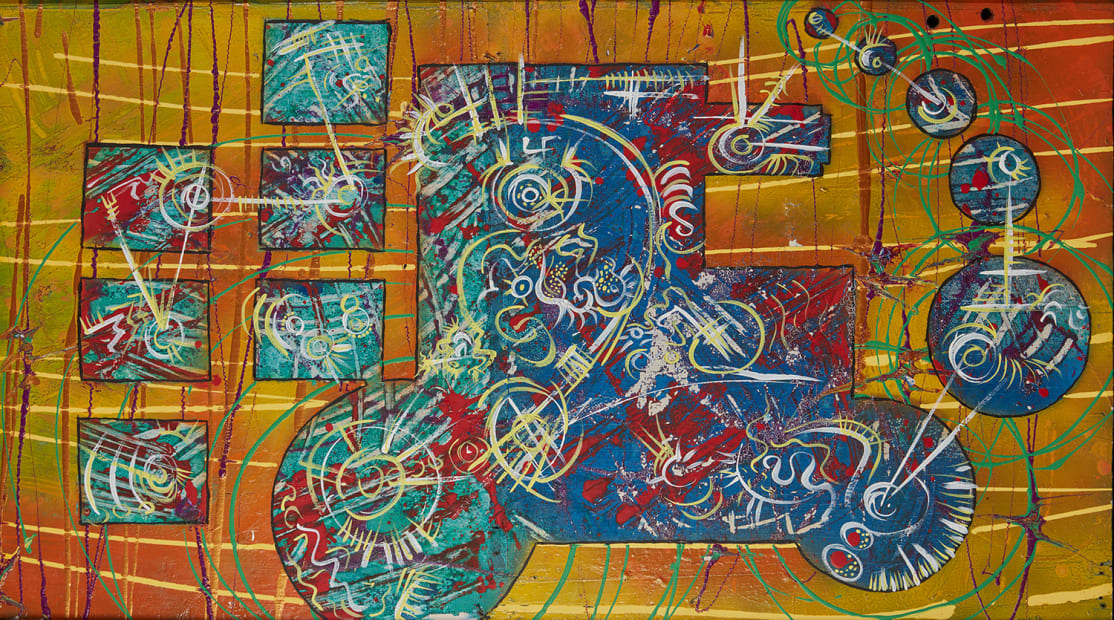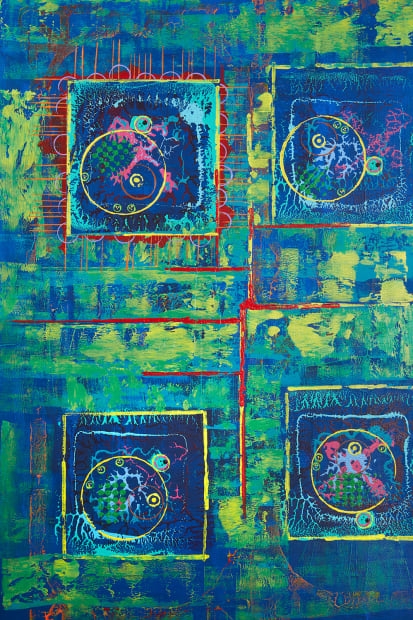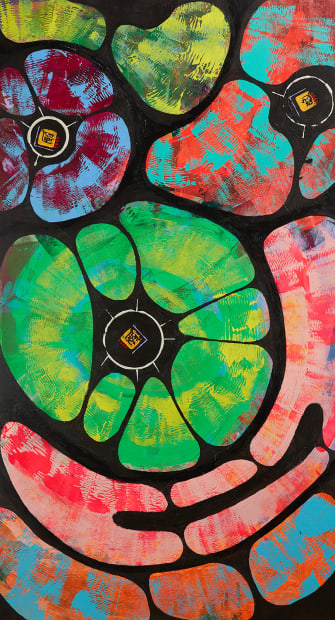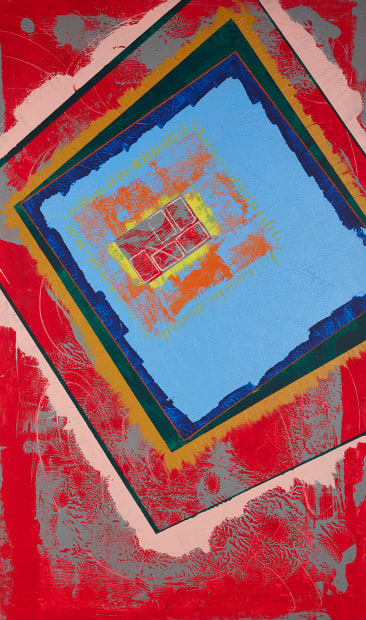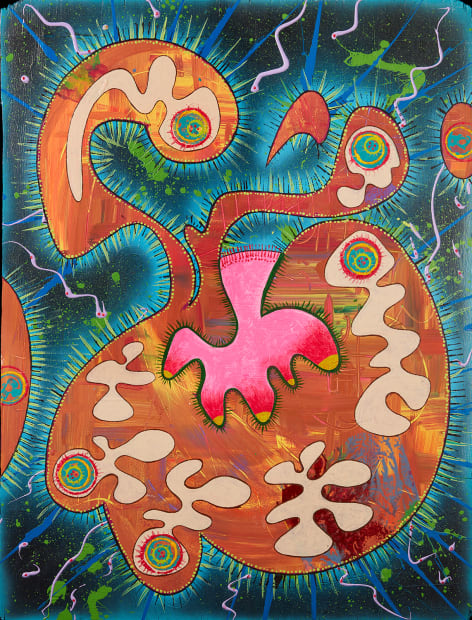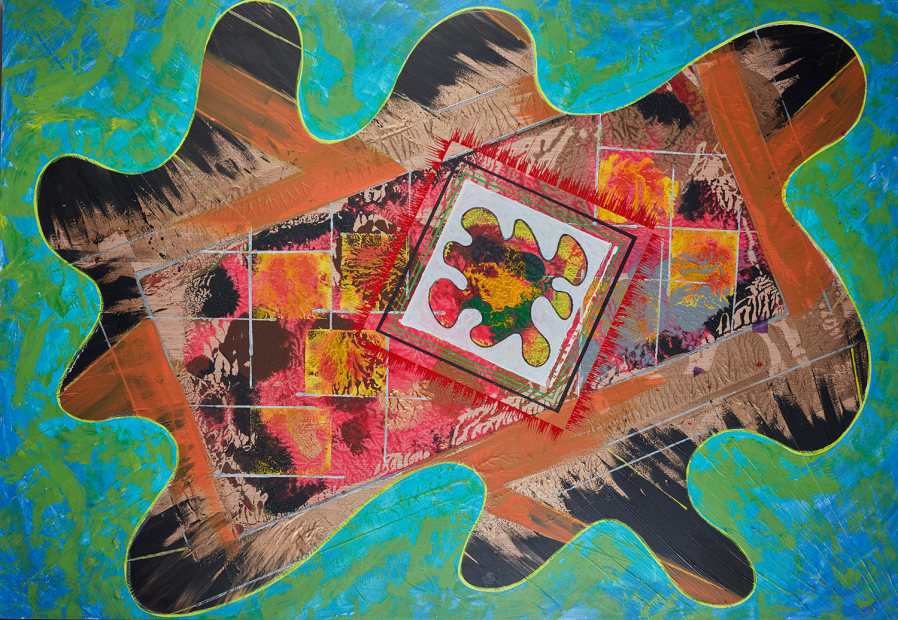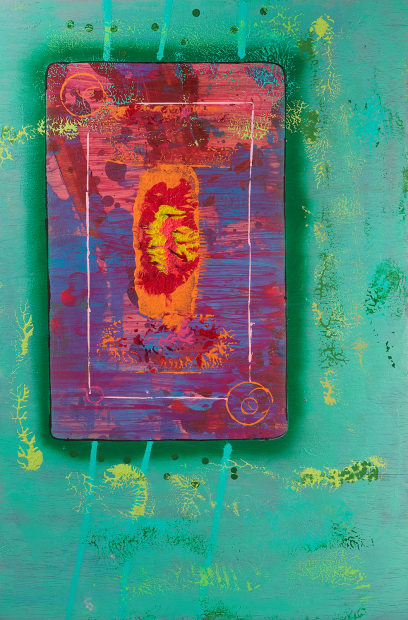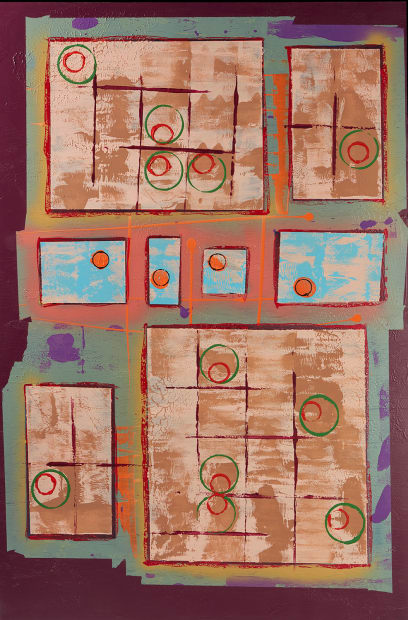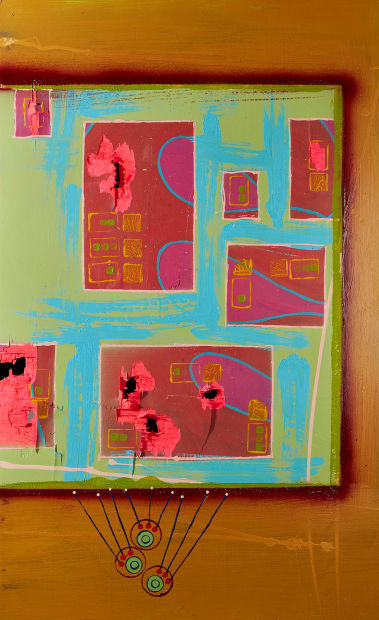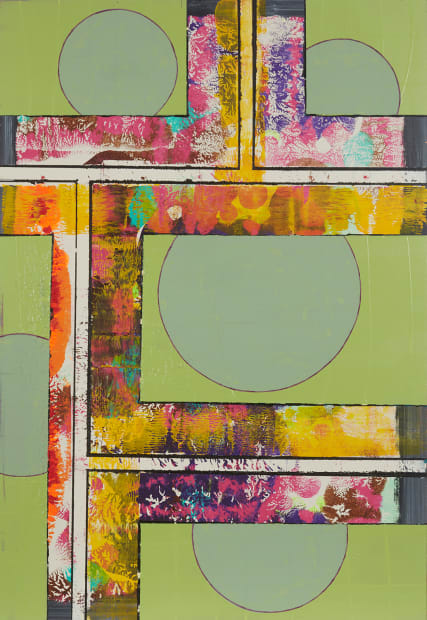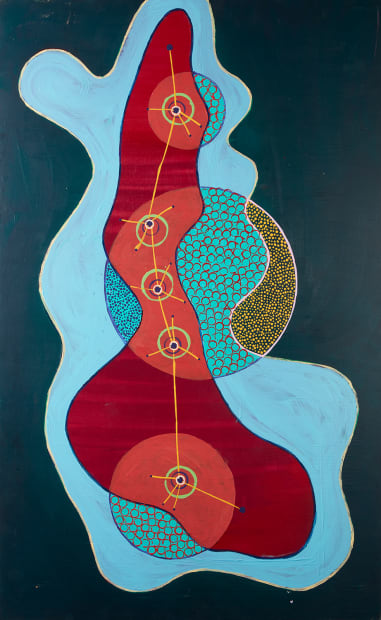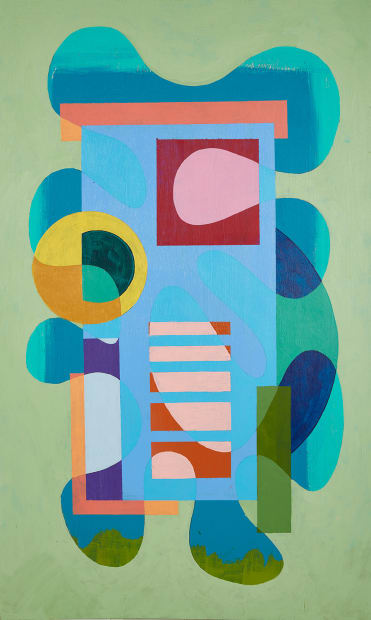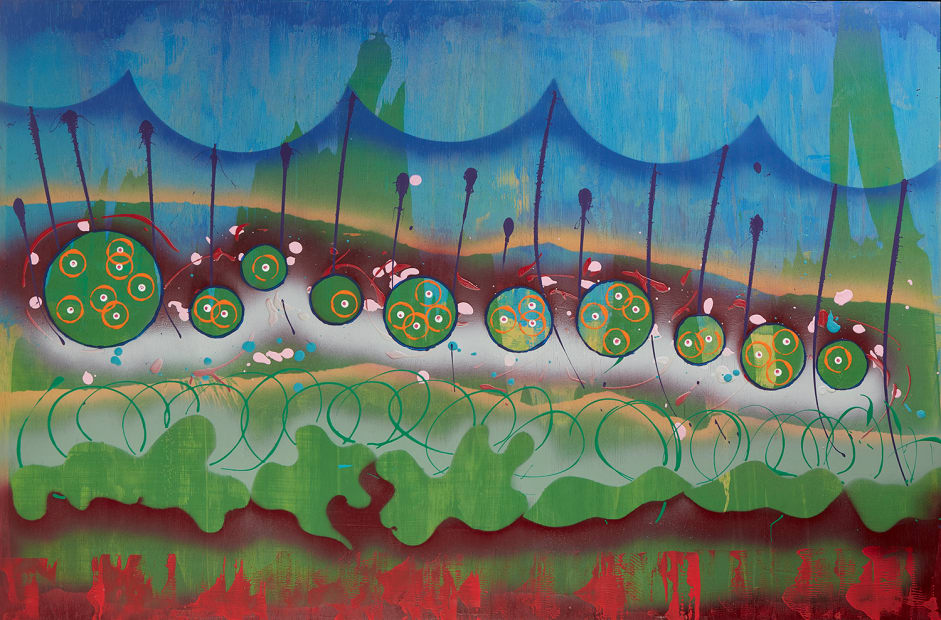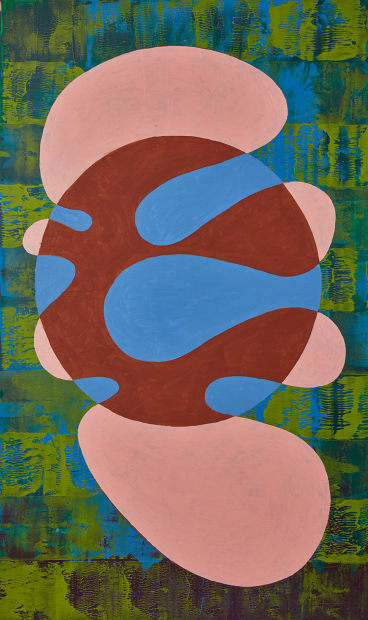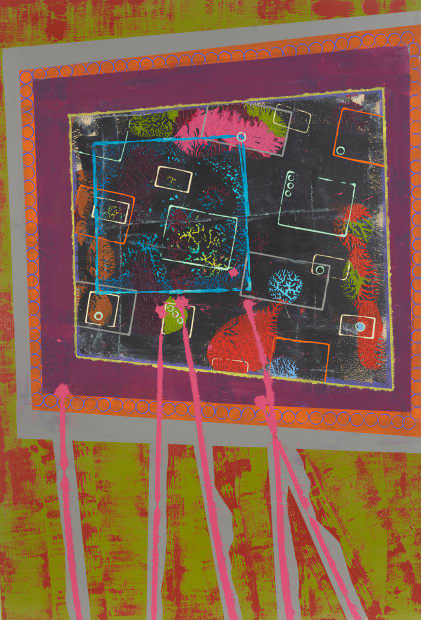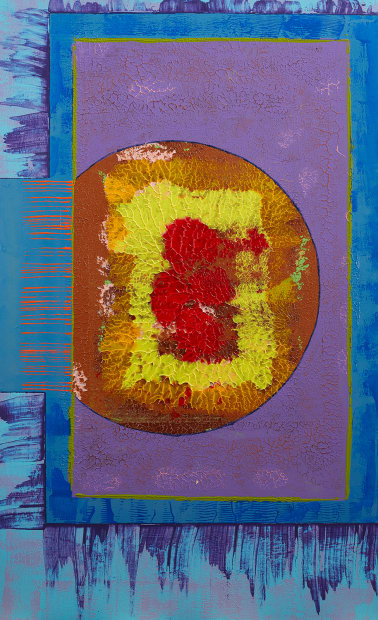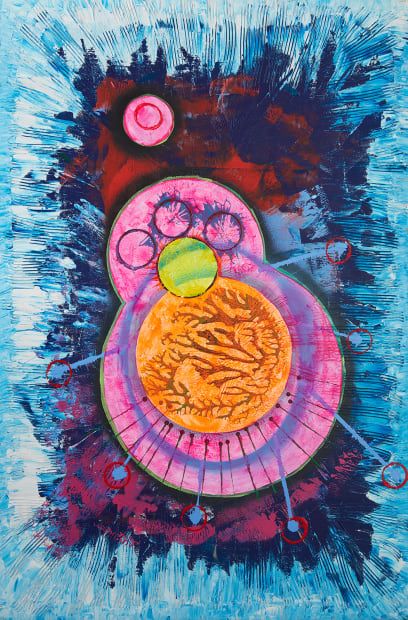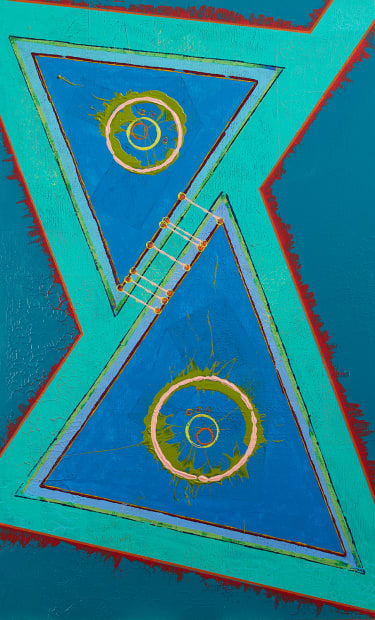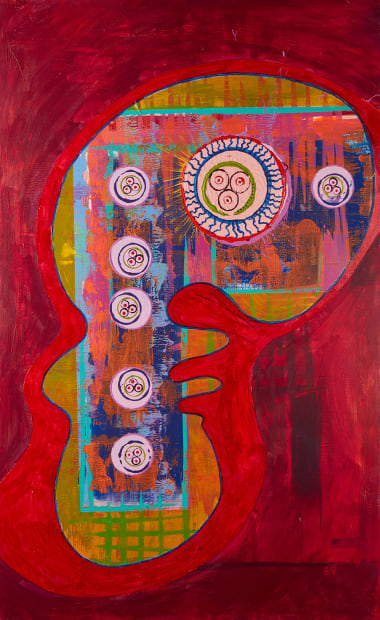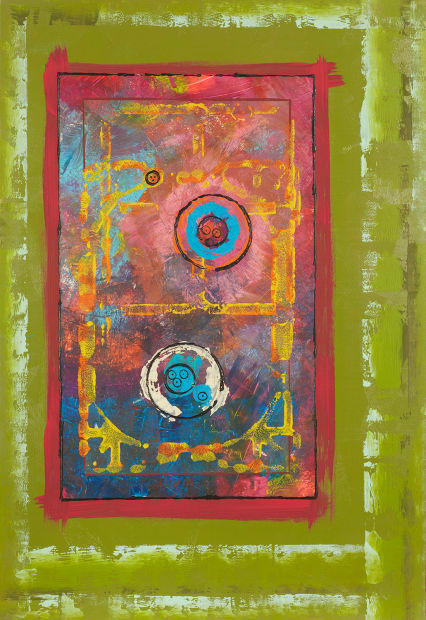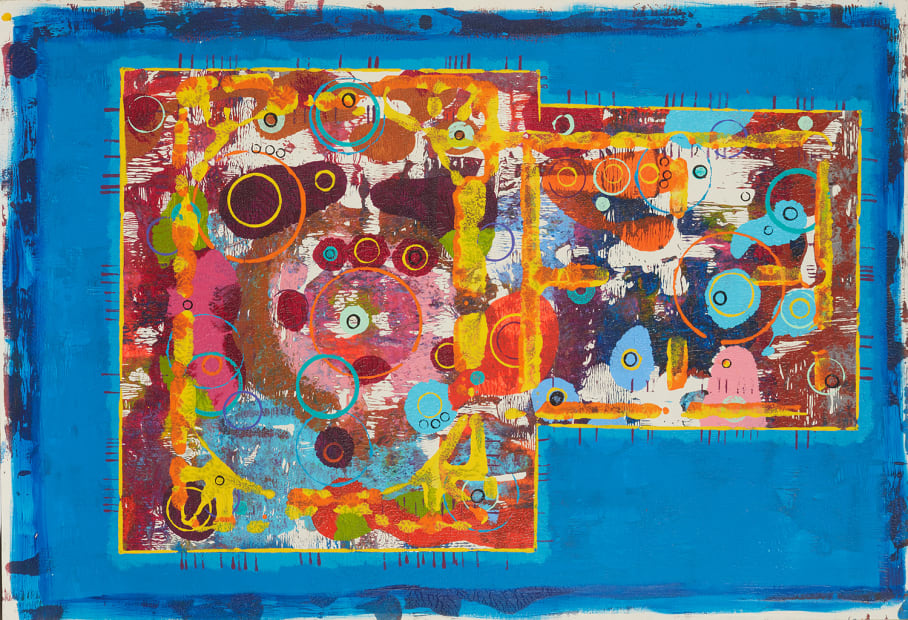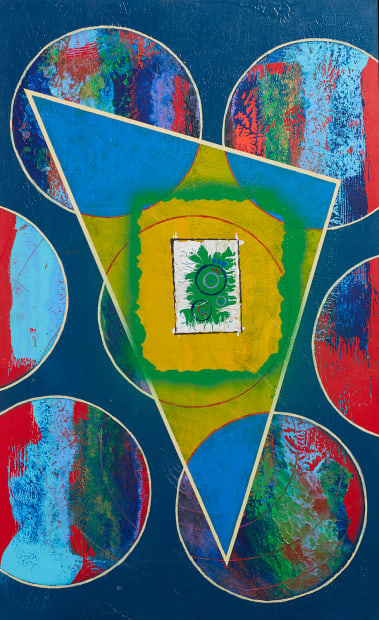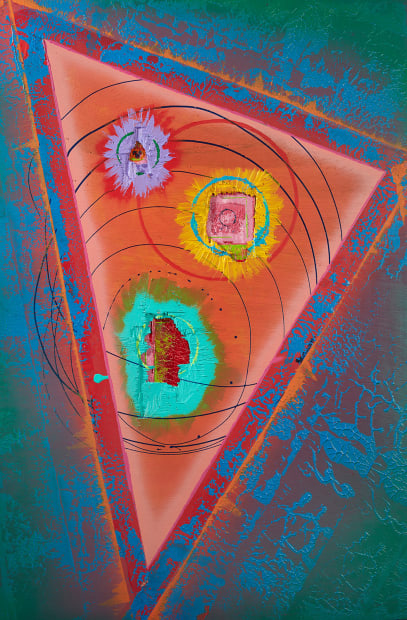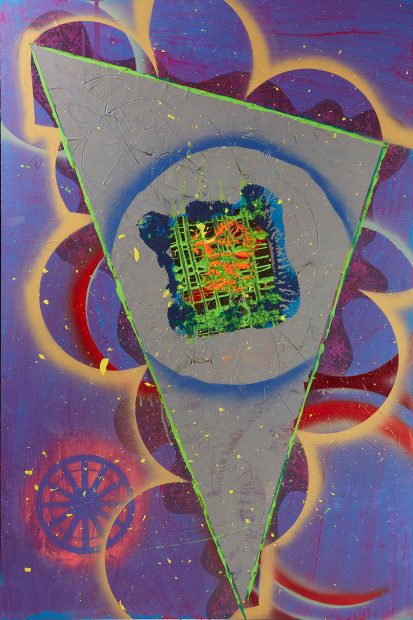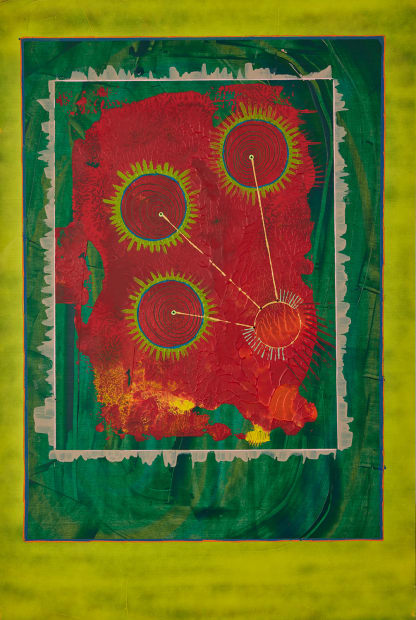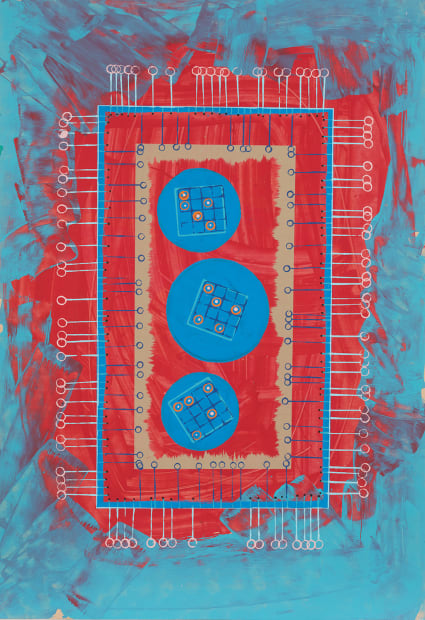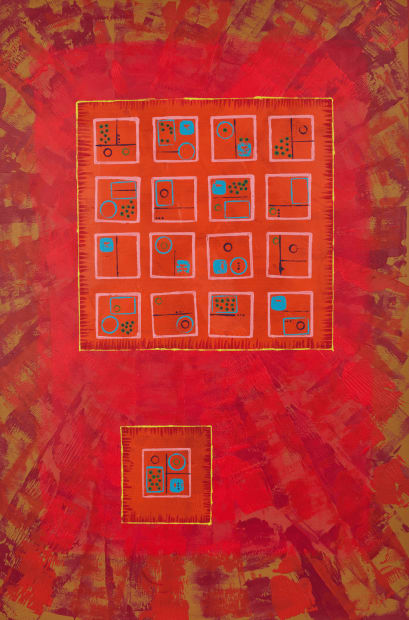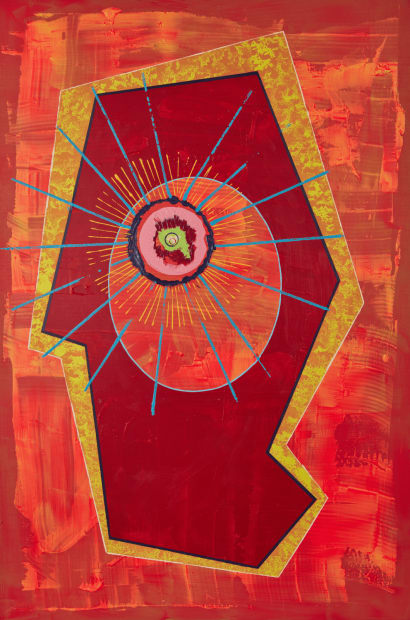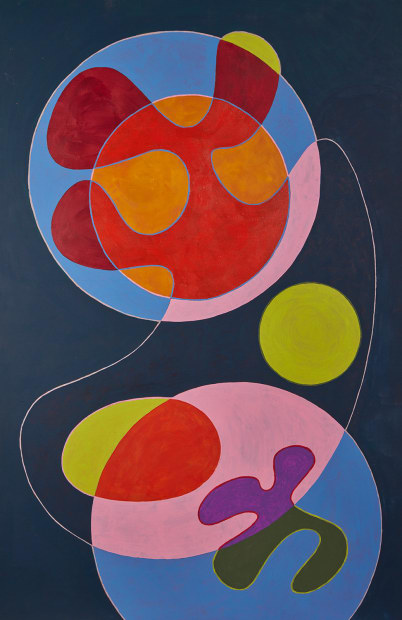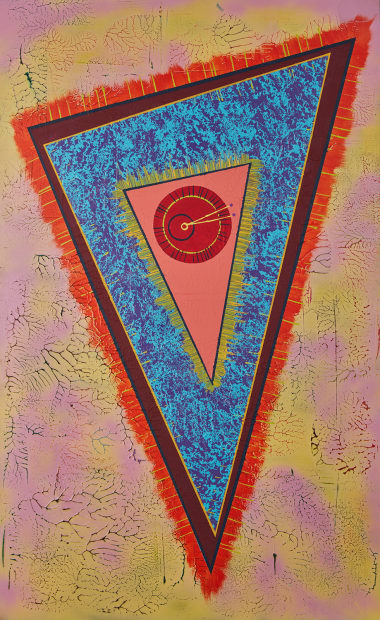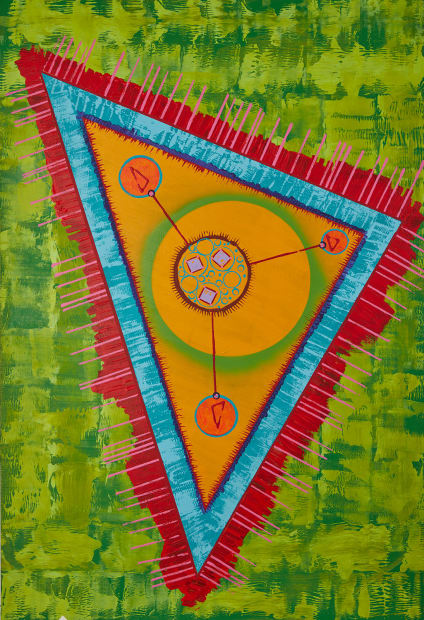Steve Simpson
"Simpson's art is a work of the imagination, exploring color, form, and texture, and relishing in the play between these properties. In that regard, his work is titled reluctantly, and not intended to imprison a painting within an interpretative box."
-Steve Rockwell
Behind the public face of photographer Steve Simpson there had always been a painter. Even when he produces playful photo-based compositions that variously incorporates rocks, tools, screws, wires, circuit boards, or the odd lemon slice, Simpson's painting output dominates. Having graduated from the University of Delaware in 1992, though never having taken a class in it, the artist found painting to be the best way to stay creative.
Beyond family and a close circle of friends, however, Steve Simpson, the painter, has remained in the shadows, unknown to the general public, at work perfecting his craft. Something important began to change five years ago. With more time to paint and a patient investigation into the possibilities now afforded, a confidence in his painterly vocabulary grew. Clearly a distinct Simpson style had evolved, and the artist was ready to extend his creative output to a wider audience.
The sense that Simpson's art is stepping out from a kind of artist laboratory is his 2020 acrylic and latex painting "Primordial Soup." Painted at the beginning of his "awakening" artistically phase, its biomorphic forms exude sufficient dynamic charge to power one life form or another. If there is a message here, it might simply be that his "soup" is a personification of an unfolding creative potential.
The painter's 2022 "Reflection" work, while meditative, is no less dynamic. An undulating blue form seems locked into into its yellow-orange ground and undergoing a ceaseless seesaw between foreground and background. The shape holds its own, retaining its integrity, imparting a sense of wholeness. "Reflection" is a confident consolidation of Simpson's "classic" artist influences and interests. Whatever there might be of Miro, Picasso, or even Dali, has been made entirely the artist's own. At the painting's center is a molecular structure of three red atoms linked by lines and circled by a charged white ring, signifying an anatomical heart, perhaps. This might be read as one of the lifeforms that emerged from the "Primordial Soup" five years earlier.
A recent 2023 painting, "The Sun the Moon and the Stars" looks outward beyond our own galaxy but retains a quality of the cellular and biological. There is, of course, nothing literal depicted here. Nevertheless, there is a form of implied space travel, one that oscillates between the micro and the macro. Something within us viewed microscopically might simultaneously pop into space at any time. Simpson's art is a work of the imagination, exploring color, form, and texture, and relishing in the play between these properties. In that regard, his work is titled reluctantly, and not intended to imprison a painting within an interpretative box.
A contrast to many contemporary artists, who follow closely the trends of the day, visiting the studios of their peers, attending their openings, and queueing up for the latest museum blockbuster, Simpson tries to isolate himself as much as possible. In the past fifteen years, he may have been to a gallery no more than three or four times. Not a fan of conceptual art or "messy" expressionism, he tends to favor the "classics," like Dali, Kandinsky, Van Gogh, Picasso, Mondrian, and Miro. Likewise, modernist architects like Frank Lloyd Wright, Mies van der Rohe, and Le Corbusier have had informed his work. The incubation of these influences combined with his unique sensibility has imbued his oeuvre with a quiet certitude, providing an immunity from the fluctuating winds of fashion.
Simpson's philosophy of art is not unlike that of Henri Matisse, who in his 1908 "Notes from a Painter," put in words a no less succinct manifesto than his paintings had already demonstrated, "What I dream of is an art of balance, of purity and serenity, devoid of troubling or depressing subject matter, an art which could be for every mental worker, for the businessman as well as the man of letters, for example, a soothing, calming influence on the mind, something like a good armchair which provides relaxation from physical fatigue." Likewise, Simpson admits that "there is no overreaching political or social issue that my work addresses." Social commentary would only "complicate" his artwork, he has stated.
"I like to make the viewer participate in the exploration of meanings and personal associations - not walk away questioning their beliefs or actions," Simpson continues. On the other hand, through a considered manipulation of texture, shape, and color, he believes that new meanings, thoughts, and ideas can come about. Ultimately, his work is "...a little like a Rorschach test. You can tell a lot about a person by what they see in the paintings."
-Steve Rockwell
"The artist's drive into the heart of the creative process has given his particular brand of abstraction a sense of the biomorphic molecular. He seems to ask, "If one can peer deep enough into the biological matter of our being, we may find answers to the riddle of life itself." It is here that we encounter the Simpson art paradox, the microscope is alternately a telescope."
-Steve Rockwell
A tree that grew out of a seed planted with the help of Steve Simpson's mother, who enrolled her eleven-year-old in a summer art class at the Delaware Art Museum, has over the years grown into a forest of over 500 paintings. Already in high school, evidence of a budding visual intelligence, came in the form of a Delaware State prize for drafting. While Simpson would retain a lifelong interest in architecture, his professional career path, however, led to photography.
Feeding his compulsion for all things art would necessarily mean the prospect of having to feed his future family during these early years. Staring down the "starving artist" spectre may be as old as art itself. No better contemporary example of this path might be Andy Warhol, who rode the bus from provincial Pittsburgh to cosmopolitan New York City only to rise to the top as a commercial illustrator, before initially assuming the "poverty" of the fine artist. In retrospect, Simpson has no regrets on his career choice, since photography, out of the commercial applications of either graphic design or art direction seemed more "art oriented" to him.
Simpson feels "pretty lucky" to have had a 30-year career, having graduated from a school of photography, learned his craft as an employee of a studio, then built one of his own. Even a casual perusal of some his output as a commercial photographer conveys a disciplined mastery of the medium, precious capital that has quietly sifted to his fine art painting over the years. What seems pertinent in Simpson's case is this extended gestation or incubation of the artist's "classic" modern art influences and interests.
The artist's drive into the heart of the creative process has given his particular brand of abstraction a sense of the biomorphic molecular. He seems to ask, "If one can peer deep enough into the biological matter of our being, we may find answers to the riddle of life itself." It is here that we encounter the Simpson art paradox, the microscope is alternately a telescope. The view within expands outward to the view without, making his abstracted forms elusive to firm association - as much psychologically derived as materially. This playfully introspective aspect demands of the viewer an active participation in the art. If Simpson is loath to lay heavy social messaging into his art, he does present a gentle prod for the viewer to at least "know thyself."
For Simpson, the past five years has seen a dramatic growth in the maturity of his painting output, a consolidation of lessons learned, skills honed and sharpened. If the artist has found his painting craft to be the touchstone to his creative self, then this alone as message is vital enough to impart to his public. The 2018 painting "Primordial Soup" presents just one work with the evident joy that suffuses Simpson's painting output, one that's amply charged with "food for thought."
-Steve Rockwell

